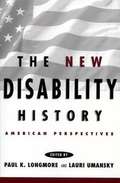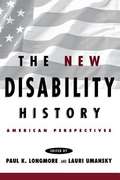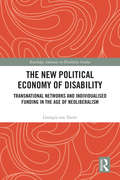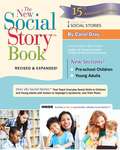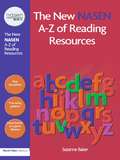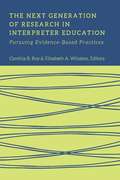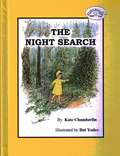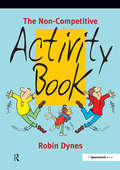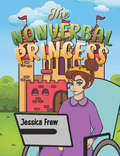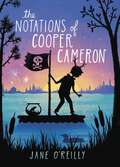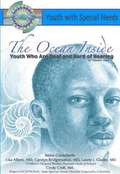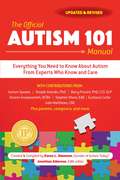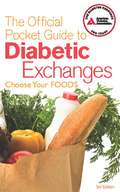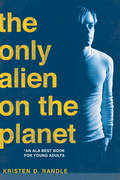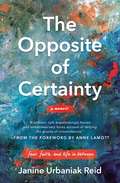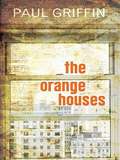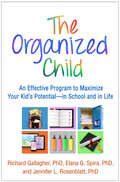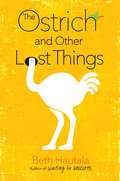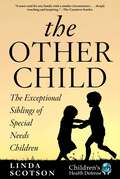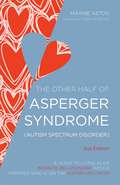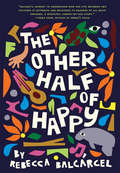- Table View
- List View
The New Boy Is Blind
by William J. Thomasfrom the book jacket: Ricky is in the fourth grade-but he's never been in school before. He is just like all his classmates except for one special difference-he is blind. How he adjusts to this new world of the clasroom, the playground, and the people around him-and how they adjust to him-makes a sensitive story about frustration and triumph. Ricky's friends, teachers, and, most of all, his mother learn an important lesson that while Ricky is blind, he is still able to do everything.
The New Disability History: American Perspectives
by Paul K. Longmore Lauri UmanskyIn a series of scholarly but highly readable essays, this book opens discussion on the role of disabled people in American history. It also examines how history has been affected by perceptions of disability. For example, one article looks at the ways disability has been used to strengthen prejudice against particular ethnic groups and to justify discrimination - "experts" have often claimed that one or another group of immigrants is genetically inferior and prone to mental retardation or physical frailty. One essay is based on the Civil War letters of a deaf man to his family. Another looks at the ways Helen Keller's Socialist beliefs were stifled by those around her.
The New Disability History: American Perspectives
by Paul K. Longmore Lauri UmanskyDisability has always been a preoccupation of American society and culture. From antebellum debates about qualification for citizenship to current controversies over access and reasonable accommodations, disability has been present, in penumbra if not in print, on virtually every page of American history. Yet historians have only recently begun the deep excavation necessary to retrieve lives shrouded in religious, then medical, and always deep-seated cultural, misunderstanding.<P> This volume opens up disability's hidden history. In these pages, a North Carolina Youth finds his identity as a deaf Southerner challenged in Civil War-era New York. Deaf community leaders ardently defend sign language in early 20th century America. The mythic Helen Keller and the long-forgotten American Blind People's higher Education and General Improvement Association each struggle to shape public and private roles for blind Americans. White and black disabled World War I and II veterans contest public policies and cultural values to claim their citizenship rights. Neurasthenic Alice James and injured turn-of-the-century railroadmen grapple with the interplay of disability and gender. Progressive-era rehabilitationists fashion programs to make crippled children economically productive and socially valid, and two Depression-era fathers murder their sons as public opinion blames the boys' mothers for having cherished the lads' lives. These and many other figures lead readers through hospital-schools, courtrooms, advocacy journals, and beyond to discover disability's past.<P> Coupling empirical evidence with the interdisciplinary tools and insights of disability studies, the book explores the complex meanings of disability as identity and cultural signifier in American history.
The New Political Economy of Disability: Transnational Networks and Individualised Funding in the Age of Neoliberalism (Routledge Advances in Disability Studies)
by Georgia van ToornThis book addresses the ways in which individualised, market-based models of disability support provision have been mobilised in and across different countries through cross-national investigation of individualised funding (IF) as an object of neoliberal policy mobility. Combining rich theoretical and interdisciplinary perspectives with extensive empirical research, the book provides a timely examination of the policy processes and mechanisms driving the spread of IF amongst countries at the forefront of disability policy reform. It is argued that IF’s mobility is not attributable to neoliberalism alone, but to the complex intersections between neoliberal and emancipatory agendas, and to the transnational networks that have blended the two agendas in new ways in different institutional contexts. The book shows how disability rights struggles have synchronised with neoliberal agendas, which explains IF’s propensity to move and mutate between different jurisdictions. Featuring first-hand accounts of the activists and advocates engaged in these struggles, the book illuminates the consequences and risks of the dangerous liaisons and political trade-offs that seemed necessary to get individualised funding on the policy agenda for disabled people. It will be of interest to all scholars and students working in disability studies, social policy, sociology and political science more generally.
The New Social Story™ Book Revised and Expanded 15th Anniversary Edition
by Carol GraySince the early 90s, Carol Gray's world-famous Social Stories have helped thousands of children with autism spectrum disorders. This 15th Anniversary Edition of her best-selling book offers ready-to-use stories that parents and educators have depended on for years, and new sections added are: How to most effectively use and apply the stories; How to improve the lives of younger children; and Social Stories for teens and adults with autism. Developed through years of experience, these strategically written stories explain social situations in ways children and adults with autism understand, while teaching social skills needed for them to be successful at home, school, work, and in the community.
The New nasen A-Z of Reading Resources (nasen spotlight)
by Suzanne Baker Lorraine PetersenThe New nasen A-Z of Reading Resources is a graded list of all current reading schemes complete with guidance on the books’ suitability for readers at different levels of experience and competence. It will: enable teachers, SENCos and support services to choose books that are appropriate yet sufficiently rewarding for struggling readers prove to be a time-saving resource for schools replenishing their reading stock follow up-to-the-minute thinking on ‘readability’. A great resource for all schools - primary and secondary - as well as support services, advisers and literacy consultants.
The Next Generation of Research in Interpreter Education: Pursuing Evidence-Based Practices (The Interpreter Education Series #10)
by Cynthia B. Roy Elizabeth A. WinstonThis collection contributes to an emerging body of research in sign language interpreter education, a field in which research on teaching practices has been rare. The Next Generation of Research in Interpreter Education investigates learning experiences and teaching practices that provide the evidence necessary to inform and advance instructional approaches. The five studies included in this volume examine role-play activities in the classroom, the experiences of Deaf students in interpreting programs, reducing anxiety in the interpreting process, mentoring, and self-assessment. The contributors are a nascent group of educators who represent a growing mastery of contemporary standards in interpreter education. Their chapters share a common theme: the experiences and learning environments of students as they progress toward entry into the interpreting profession.
The Night Search
by Kate ChamberlinFrom the book jacket: Heather, who is blind, resists using her white cane until one night while camping her puppy wanders off. Heather tries to find the puppy. She finds a stick which helps, but she realizes that her white cane is a very valuable helper. This is a good book to use with the reluctant cane user, and for inservicing students showing the importance of the cane.
The Night Search
by Kate ChamberlinHeather, who is blind, resists using her white cane until she tries to find her puppy outdoors at night, an experience that helps her accept her cane as a valuable helper.
The Non-Competitive Activity Book
by Robin DynesThis superb practical handbook contains 100 activities that are non-competitive and can be used across the whole age spectrum with individuals or groups. It provides indispensable material for use with learning disabilities, mental health, physical disabilities and regressed psychiatric or geriatric patients. The non-competitive nature of these activities ensures that people feel safe in making a contribution, and fear of failure or disappointment is effectively eliminated. Divided into photocopiable sections, these provide a session format that focuses on maintaining and increasing the function of the whole person. It is an ideal resource for day centres, hospitals, care homes and the creative group leader.
The Nonverbal Princess
by Jessica FrewBased on the real-life events of actress and model Jessica Frew, this princess story breaks through barriers of disability. It builds bridges for inclusivity with a storyline that transcends traditional fairy tales. With so many who feel unseen and unheard in the disabled community, The Nonverbal Princess gives a voice to the voiceless, putting the need for equality at center stage with a spotlight that shines with hope for inclusion. A book for all ages, The Nonverbal Princess is not your typical princess story, but seldom are interesting stories typical. This tale is designed to challenge assumptions about disability and celebrate our shared humanity with a happily-ever-after of valued diversity. While this is a fairy tale, the happy ending can be made real. It begins with awareness, continues with acceptance, and is found with an appreciation for what makes us different. Our differences don't define us, and they shouldn't divide us. For those who feel unseen and unheard, The Nonverbal Princess is dedicated to you.
The Notations of Cooper Cameron (No Series)
by Jane O'ReillyEleven-year-old Cooper Cameron likes things to be in order. When he eats, he chews every bite three times on each side. Sometimes he washes his hands in the air with invisible water. He invented these rituals after the death of his beloved grandfather to protect others he loves from terrible harm. But when Cooper's behavior drives a wedge between his parents, and his relationship with his older sister, Caddie, begins to fray, his mother's only solution is to take Cooper and Caddie to the family cabin for the summer. Armed with a collection of rocks, his pet frog, and his notebook, Cooper vows to cure himself and bring his damaged family back together.
The Ocean Inside: Youth Who Are Deaf or Hard of Hearing (Youth with Special Needs)
by Autumn LibalFor Denzel, sound is a mysterious, mind-stretching thing. He can hear some sounds, but he can't figure out what those sounds mean. Half the time, he just ignores what he hears because none of it makes any sense. At other times, however, he tries to imagine what sound must be like for other people. Then he concentrates on sound intensely. He tries to picture sound, to feel sound, to smell and to taste sound. Because he cannot hear, Denzel tries to imagine sound the way other people might imagine what it's like to fly. But no matter how he tries, Denzel cannot imagine how it would feel to hear the way other people hear. Ten to 15 percent of all children in the United States are born with a hearing loss of some kind. Children who are deaf and hard of hearing face different types of challenges as they mature. Learning to communicate, overcome discrimination, and find their place in society can be difficult and confusing for children with hearing loss. The situation is complicated by the fact that their peers, teachers, and parents may not understand their needs. In The Ocean Inside: Youth Who Are Deaf and Hard of Hearing, you will follow Denzel through his own journey through deafness. As you do, you will learn: * the unique challenges facing children who are deaf and hard of hearing, * strategies for dealing with these challenges and approaches to deaf education, and * accomplishments that other deaf people have made along the way.
The Official Autism 101 Manual: Everything You Need to Know About Autism From Experts Who Know and Care
by Karen L. SimmonsGold IPPY Award winner for Book of the Year, medicine category. When you need answers to your questions about anything related to autism, including early diagnosis, therapies, the buzz about vaccinations, social skills, self-esteem, planning for the future, coping skills, music therapy, or solving reading problems, this master collection gives you practical and proven answers. The Official Autism 101 Manual is the most comprehensive book ever written on the subject of autism. Parents and professionals rave that this is your ultimate resource for understanding and responding to autism. With forty-four contributors—such as Temple Grandin, Bernard Rimland, Pat Wyman, Tony Attwood, Darold Treffert, and more—you learn from dozens of caring experts and supporters who bring you the best the autism community has to offer.
The Official Pocket Guide To Diabetic Exchanges: Choose Your Foods (Third ed.)
by American Diabetes Association StaffCompletely updated to match the newest edition of Choose Your Foods: Exchange Lists for Diabetes Meal Planning, this pocket-sized bestseller is now better and more complete than ever. Every day and at every meal, millions of people use the exchange list system to help them plan their meal, choose the healthiest foods, and estimate the right portions. By grouping similar foods into exchangeable portion sizes, people with diabetes can instantly create entire meals, specifically designed to help them control their blood glucose and lose weight. This proven system is the most popular approach to diabetes meal planning and has been used by dietitians, diabetes educators, and millions of people with diabetes for over 40 years. This portable, pocket-sized version of the Choose Your Foods: Exchange Lists for Diabetes Meal Planning takes all of the information from the original and packages it in a format that's perfect for trips to the grocery store or a meal at a restaurant. Updates to this new, third edition, includes new foods, especially combination foods and fast foods, such as burritos, hamburgers, and other popular meals, revised portions, and updated meal planning tips and techniques. Also included is a new section on alcohol, including tips for working it into meal plans and information on consuming it safely and moderately within a diabetes meal plan. This new edition has also been redesigned to make finding particular foods and food groups even easier. Plus, the expanded index makes finding individual foods even easier than before. With more foods, revised portion sizes, and the combined knowledge of the American Diabetes Association and the American Dietetic Association, this handy guide is the ultimate meal planning tool for everyone with diabetes.
The Only Alien on the Planet
by Kristen D. RandleWinner of multiple awards, praised by librarians and teachers as one of the best books ever written for teens-NOW BACK IN PRINT! New town, new school, new friends. It was difficult for Ginny at first, but her senior year is finally starting to feel kind of normal. That is, until she sees him-the beautiful mystery in her English class. He has never spoken a word to anyone. He moves through each day at school without making eye contact. His name is Smitty Tibbs, but everyone calls him the Alien. Ginny is convinced there's more to the Alien than his muted exterior. But as she attempts to break into his safe and emotionless world, she realizes her efforts might be causing more harm than good. Has she gone too far, or not far enough? "Utterly compelling. . . totally satisfying. A fast-moving, unusual contemporary romance that should have great appeal. " School Library Journal "The thick wall an abused teenager builds between himself and the world is penetrated at last by an extraordinary pair of friends. . . A strong book with healing at the end, memorable for its spirited friendships and unpreachy soul-searching. " Kirkus Reviews "Ginny's deft and engaging narration reveals a delightful and totally believable teen. [T]he overall impact of this psychological novel is so powerful. " Booklist
The Opening Doors: My Child's First Eight Years Without Sight
by Lois T. HendersonIn the early 1950's, the author couldn't find books about blind children, so she wrote about her own son. Through a mother's eyes, we follow the growth of this new family as they learn, along with Davey, how to function in the sighted world.
The Opposite of Certainty: Fear, Faith, and Life in Between
by Janine Urbaniak Reid&“Brilliant, rich...breathtakingly honest and sometimes very funny.&” —Anne Lamott&“Extraordinary.&” —Caroline Leavitt&“Observant and warm...the finest company.&”—Kelly Corrigan&“A beautiful sucker punch, like life.&“—Ron Fournier&“Subtle, powerful, and hypnotic...&”— Martin Cruz Smith What happens when we can no longer pretend that the ground underfoot is bedrock and the sky above predictable?All Janine Urbaniak Reid ever wanted was for everyone she loved to be okay so she might relax and maybe be happy. Her life strategy was simple: do everything right. This included trying to be the perfect mother to her three kids so they would never experience the kind of pain she pretended not to feel growing up. What she didn&’t expect was the chaos of an out-of-control life that begins when her young son&’s hand begins to shake.The Opposite of Certainty is the story of Janine&’s reluctant journey beyond easy answers and platitudes. She searches for a source of strength bigger than her circumstances, only to have her circumstances become even thornier with her own crisis. Drawn deeply and against her will into herself, and into the eternal questions we all ask, she discovers hidden reserves of strength, humor, and a no-matter-what faith that looks nothing like she thought it would. Beautifully written and deeply hopeful, Janine shows us how we can come through impossible times transformed and yet more ourselves than we&’ve ever allowed ourselves to be.
The Orange Houses
by Paul GriffinTamika Sykes, AKA Mik, is hearing impaired and way too smart for her West Bronx high school. She copes by reading lips and selling homework answers, and looks forward to the time each day when she can be alone in her room drawing. She's a tough girl who mostly keeps to herself and can shut anyone out with the click of her hearing aid. But then she meets Fatima, a teenage refugee who sells newspapers, and Jimmi, a homeless vet who is shunned by the rest of the community, and her life takes an unexpected turn.
The Organized Child: An Effective Program to Maximize Your Kid's Potential--in School and in Life
by Richard Gallagher Elana G. Spira Jennifer L. RosenblattAre you sick of nagging your child to write down homework assignments? Is his or her backpack a black hole that eats up papers, books, and gym clothes? Organizational skills problems aren't just frustrating--they get in the way of school success and wreak havoc at home. Fortunately, help is at hand. This unique resource stands out from other books because it is based on a scientifically tested program that works. Learn how you can teach your 7- to 13-year-old specific skills to: *Organize school materials and toys. *Track assignments. *Improve time management and planning. *Overcome brain "Glitches"--mischievous creatures that trip kids up. *Create and follow effective routines. Concrete examples, tips for strategically using praise and rewards, and practical tools (you can download and print additional copies as needed) help you implement each step of the program. Maximizing your kid's potential starts now--here's how. Mental health professionals, see also the related intervention manual from Gallagher et al., Organizational Skills Training for Children with ADHD: An Empirically Supported Treatment.
The Ostrich and Other Lost Things
by Beth Hautala<P>In this beautifully written novel, the bonds and challenges of caring for a sibling with autism are bravely explored, along with the pain and power that comes from self-discovery. <P>Eleven-year-old Olivia Grant has a knack for finding lost things. She can find lost rings, pets, and even her elderly neighbor's misplaced glasses. There's only one thing Olivia has never been able to find--her brother Jacob's toy ostrich. It wasn't until the day Jacob lost his ostrich that Olivia noticed how different he was: Jacob is autistic, and though she's his little sister, Olivia often feels like the older of the pair, his caretaker. And with her parents so heavily focused on maintaining status quo for Jacob, it's Olivia who has stagnated in his shadow--unable to explore new opportunities, or to be her own person. In fact, apart from being Jacob's sister, Olivia's not really sure who she is. <P>So when summer break begins, and the local community theater announces auditions for an all children's production of her favorite show, Peter Pan, Olivia jumps at the chance to claim something for herself. But what begins as a promising opportunity and a wonderful escape quickly becomes pure chaos. The visiting zoo with an odd assortment of animals--including an ostrich that causes even more trouble than Jacob's missing toy--only make matters worse, as Olivia's summer is shaping up to be just as consumed by Jacob's needs as the rest of her life has been. In time, and with the help of some unlikely alliances, Olivia must learn what it means to be separate from her brother and still love him, how to love herself in spite of her own flaws, and that not all lost things are meant to be found.
The Other Child: The Exceptional Siblings of Special Needs Children
by Linda ScotsonIn The Other Child, Linda Scotson looks at the impact on a child at the arrival of a handicapped sibling. Lili, Linda Scotson&’s daughter, was only two when Doran was born, and she has been Doran&’s companion, motivator, carer—in fact, sister extraordinaire. In helping Doran, she has had to cope with other problems—with the loss of her father, ill health, and her own minor neurological difficulties. But she has done so with courage and determination. What do siblings lose, growing up with a brother or sister with brain injury—and what do they gain? How does the hostility and indifference of the outside world affect these children&’s lives? Becoming &“carers&” themselves, do they miss out on parental care from weary and overstretched parents? How do they reach an understanding, often when very young, of what their injured sibling can and cannot do? Shining through these stories is the love, the humor, and the constancy with which these children approach their very difficult family position—many of them, in adulthood, continuing to care for the handicapped companion of their childhood. By drawing attention to these children, Linda Scotson not only pays tribute to their qualities but also shows how unjust the system is towards those parents struggling to keep their brain-injured child within the family. She argues for a greater network of support systems for the healthy siblings and a greater understanding of the new home treatment programs for injured children—programs in which the whole family, as a team, can participate. This will be an invaluable book for parents of brain-injured children, and for all those professionally involved in the care of such families.
The Other End of the Stethoscope
by Marcus EngelWork overload Constantly changing policies Increasing bureaucratic regulations These are just a few of the challenges health care providers face everyday; Challenges that limit the ability to provide excellent patient care. After being blinded and suffering catastrophic injuries at the hands of a drunk driver, Marcus Engel witnessed health care from the other end of the stethoscope. Through 300 hours of reconstructive facial surgery, and years of hospitalization, rehab and recovery, Marcus witnessed first hand, the good, the bad and the ugly of patient care. Marcus' insights will give health care providers new and essential strategies to rediscover the magic and compassion between caregiver and patient. "With over 20 years of experience in medical education, I wish I had this book to share with every resident I taught. Marcus has cut right to the chase, and provides a perspective on medical care that every physician, nurse, and allied health professional should hear." David Campbell, MD, MEd President/CEO Institute for Family Medicine "Marcus' book is a powerful reminder of why we do what we do, and how the tools of communication, compassion and caring make all the difference." Terri Seidel, RN Director of Operations St. Louis and Southern Illinois region Healthsouth Surgery Centers.
The Other Half of Asperger Syndrome (Autism Spectrum Disorder): A Guide to Living in an Intimate Relationship with a Partner who is on the Autism Spectrum Second Edition
by Tony Attwood Maxine AstonDoes your other half have Asperger Syndrome or do you suspect that he or she is on the autism spectrum? This quick and helpful relationships guide provides all the information you need for relationship success with your ASD partner. In the second edition of this best-selling book, Maxine Aston draws on over a decade of experience working with couples affected by Autism Spectrum Disorder. Updates include reference to recent research and information on same sex relationships, sensory issues and pregnancy. Full of bite-size tips and advice, the book explains Asperger Syndrome, discusses whether or not seeking an autism diagnosis will help, and offers simple strategies for coping with a range of relationship challenges including communication, social, and intimacy difficulties.
The Other Half of Happy
by Rebecca BalcárcelQuijana is a girl in pieces. One-half Guatemalan, one-half American: When Quijana's Guatemalan cousins move to town, her dad seems ashamed that she doesn't know more about her family's heritage. One-half crush, one-half buddy: When Quijana meets Zuri and Jayden, she knows she's found true friends. But she can't help the growing feelings she has for Jayden. One-half kid, one-half grown-up: Quijana spends her nights Skyping with her ailing grandma and trying to figure out what's going on with her increasingly hard-to-reach brother. In the course of this immersive and beautifully written novel, Quijana must figure out which parts of herself are most important, and which pieces come together to make her whole. This lyrical debut from Rebecca Balcárcel is a heartfelt poetic portrayal of a girl growing up, fitting in, and learning what it means to belong.

